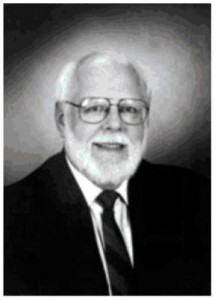Innovation that is related to a particular mission, can be even more powerful than that which is simply responding to solving a problem or driven by the desire to simply make money. Innovation is difficult in the best of circumstances, which is why it is usually accomplished by individuals who are driven. And not just driven to please their boss in the drive to get promoted, but driven by a mission.
What is the difference between ambition, problem solving and pursuing a mission or a vision? Missions and visions are bigger than individuals and organizations. They may be related to a philosophy which can sometimes be expressed as a tag line, such as “Bicycles for the Mind” which was Apple’s tagline early on when I attended Apple Developer University and was emblazoned on the large three ring binder of materials we were all given. I mention this as I would have never know this was Apple’s philosophy had they not disseminated it in this manner, as it did not show up elsewhere.
At the early Apple providing the “Bicycles for the Mind” mission enabled them to engage 30,000 developers creating software applications none of whom were on Apple’s payroll. By the way, Apple thirty years later, now has 1,000,000 registered developers a big part of the reason they can stay ahead of their competition. I am pointing this out not to glorify Apple, but to show having a terrific mission which can be expressed as a tagline that is an encapsulation of a larger meaningful philosophy, can be a powerful motivator for innovation. Apple is not the most valuable company in the world only because of design and ambition, but because that design and ambition were subordinated to a vision / mission. In contrast I would characterize Microsoft’s mission during its early years as “Deliver business capability”.
In short the missions of the two companies although each powerful were very different. Microsoft, founded April 1975 in Albuquerque, NM cared more about business than individuals.
Apple founded a year later April 1976 in Cupertino, CA was completely focused on empowering individual end users. Now Microsoft’s market cap in early July of 2015 is $358.53B and Apple’s market cap more than double at $726.7B. Of course there are multiple reasons for this besides mission, but mission contributed and still contributes in a nonlinear manner.
Another personal example from academia. Stanford University, a private institution founded in 1885, currently has over 16,000 students and the fourth largest endowment of $21.4 billion, just ahead of Princeton with $20B. Cogswell Polytechnical College also a private institution founded in 1887, and has 462 students and an endowment of $2M. One significant reason Stanford’s endowment is 10,000 times greater than Cogswell, with a student body only 40 times greater, is their founders stated very different missions. I am paraphrasing here because Cogswell has changed its mission and is now on a serious upswing. Henry Cogswell, a successful dentist and inventor of dental technology, wanted to provide “a technical education to working people” and Leland Stanford a tycoon, industrialist and politician wanted to provide; “learning …. of the highest grade”.
Both schools were both founded in the mid 1880’s, Cogswell in San Francisco and Stanford just a little south, with roughly the same $1M endowment but very different missions. The pursuit of turning out employable graduates vs. the pursuit of excellence, certainly influenced the current reality that Stanford’s endowment is now $1.25M per student and Cogswell’s is $4,330!
Having an excellent mission is incredibly important to any entity seeking to provide value to the world.





